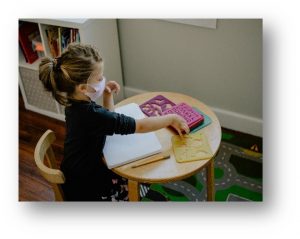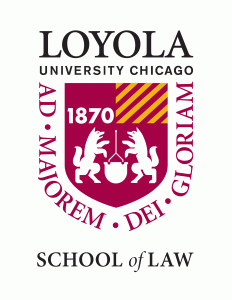Due to the unprecedented COVID-19 pandemic, most schools in the United States made the difficult decision to conduct the school year remotely by utilizing video platforms such as Zoom and Google Classroom. Change is hard for most people. Parents with children at home are finding the adjustment particularly difficult. Working parents are forced to manage their own work schedules in addition to managing their children’s daily virtual classroom schedules, which is not an easy task. To make matters more complicated, teachers with children at home must manage their own classrooms in addition to helping their children with virtual classrooms and homework.
So, what do American families do when faced with this unfortunate reality? Some parents have made the decision to stop working full-time to help manage virtual learning. For heterosexual parents, this additional burden usually falls on the mother, regardless if the mother also works full-time. For example, a new Center for American Progress analysis of the Household Pulse Survey found that during the COVID-19 pandemic, Millennial mothers are nearly three times more likely than Millennial fathers to report being unable to work due to a school or child care closure. Most families have no choice but to continue working full-time and forge ahead.
However, some American families with financial flexibility have left the traditional education system entirely by pulling their children out of school and creating their own learning pods with other families in their community.
What Are Learning Pods?
Learning pods, also known as pandemic pods or pods, are small, in-person groups of students learning together with the help of an in-person tutor or teacher. This concept developed as a collaboration between K-12 private schools in the New York and San Francisco areas but has spread as a concept throughout the United States.  The teachers who instruct the private learning pods either work with the curriculum of the students’ current school or provide a private education entirely. If families do not wish to create a pod on their own, they can turn to organizations that provide a service that match families with teachers and organize pods on behalf of families. These organizations facilitate home-based learning pods by hiring and managing teachers and helping families negotiate pod agreements.
The teachers who instruct the private learning pods either work with the curriculum of the students’ current school or provide a private education entirely. If families do not wish to create a pod on their own, they can turn to organizations that provide a service that match families with teachers and organize pods on behalf of families. These organizations facilitate home-based learning pods by hiring and managing teachers and helping families negotiate pod agreements.
Are Pods an Option for Everyone?
Learning pods are not an option for most families because of the high price tag associated with them. Depending on the region and the experience level of the teacher, this approach can range from hundreds to thousands of dollars a month per family. For example, according to Learning-Pods.com (a curriculum started by the Portfolio School, Hudson Lab School, and Red Bridge School), elementary pods (grades K through 5) cost about $68,750 for a five-month semester. The full academic year costs $125,000 per pod, or almost $42,000 per pupil in a group of three. However, the cost goes down the more children there are in the pod. For example, it could be as little as $15 an hour per student in a pod of nine. The instruction runs for five hours a day and an average of 18 school days a month, costing the student in the nine-person pod $1,389 a month.
The Growing Education Gap
While independently run pods may seem like a short-term solution for some, it comes at the expense of others. If schools remain closed, then well-off families will continue to lean on non-traditional education solutions for their children. This will continue to affect the growing education gap.
Some parents who have the option of enrolling their children into pods argue that by pulling their children out of school, they are allowing more resources for the kids who stay in school, but according to L’Heureux Lewis-McCoy, Ph.D., an educational sociologist who studies educational inequality at New York University’s Steinhardt School of Culture, Education and Human Development, that’s “not how education finance works.” Rather, the use of learning pods could diminish school funding further, leaving families already struggling to survive and meet their child’s education needs to have even less access to resources and opportunities compared to their child’s privileged peers. Furthermore, teachers quitting school districts to teach learning pods have contributed to a widespread loss in experienced public educators throughout the United States.
Remote Learning: Is It A Solution?
Remote learning, while seemingly the only viable option for most public schools, has proved an unacceptable solution. Schools across the country are dealing with system outages, cyberattacks, and other technical issues related to the remote format. Additionally, remote learning has presented significant challenges to students with disabilities and students who are learning English as a second or third language.
An estimated 14% of public school students receive special education services in the United States. The federal Individuals With Disabilities Education Act ensures that those children have a right to a free, appropriate public education whenever and wherever schools are operating. However, the sudden switch to a remote learning environment has left students with IEPs, also known as Individualized Education Programs, without the assistance they need as many students struggle with writing, typing, and cannot use technology independently.
Liberty and Pods for All
The creation and widespread popularity of learning pods has caused a lot of outrage. However, some school districts have decided to lean into the idea of learning pods instead of trying to stop them. As the saying goes, “If you can’t beat them, join them.” A school district in Denver, Colorado, decided to pursue the novel idea of school-run learning pods. That district decided to create two to three pods per grade level at all 41 elementary, middle, and K-8 schools. The school-run learning pods include up to ten students at the elementary level and fifteen students at the middle school level. The learning pods are taught by teacher aides, substitutes, and other individuals paid by the district.
Around forty percent of the district’s children are eligible for subsidized meals, so this strategy ensures that all students have access to learning pods regardless of their financial circumstances. It is important that other districts follow suit and commit to finding solutions to this seemingly impossible puzzle, so that American children of all ages are not deprived of their education and, arguably, their future.
Haley Burridge is a third-year law student at Loyola University Chicago School of Law and wrote this blog post as part of the Education Law Practicum.

